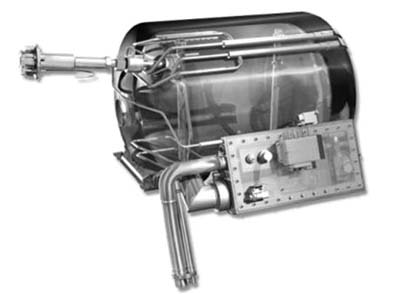When ESA was developing its hydrogen-fueled Ariane rockets, they got Austria’s MagnaSteyr to build tightly sealed fuel lines and double-walled storage tanks capable of trapping and holding liquid hydrogen and oxygen. Now MagnaSteyr has adapted the technology developed for Ariane to build clean-burning cars that can use hydrogen instead of gasoline for fuel.
They worked with BMW to create a Series 7 production car that burned hydrogen as fuel, dubbed the BMW Hydrogen 7. For decades, manufacturers have been trying to figure out how to realistically use hydrogen to power cars. Uncompressed hydrogen would take a tank as large as a bus while ordinary compressed hydrogen could be...explosive.

The BMW Hydrogen 7 car with its liquid hydrogen-powered combustion engine and a fuel tank developed based on space technology from the European Ariane rocket. Credits: BMW/Magna Steyr Aerospace
So they store it as a liquid, just like they do with rockets, at –253ºC. The BMW Hydrogen 7 cars store 114 liters of liquid hydrogen in highly-insulated fuel tanks that can keep the hydrogen cold for almost two weeks. BMW ebuilt 100 of the hydrogen-fueled cars, which also use regular petrol, and they are still used to shuttle VIPs at special events.
The project highlighted some limitations before liquid hydrogen driven cars are ready for highway driving. One is that as the liquid hydrogen warmed, it boiled into a gas, and was slowly vented off. That meant a driver leaving the car at the airport for two weeks would return to an empty fuel tank. The other obstacle, that liquid hydrogen can only be found at ten pumps in the world, would be solved with popularity.
Car companies are also looking at fuel cells, which generate electricity from hydrogen and are easier to work with than liquid hydrogen, though not as powerful.






Comments